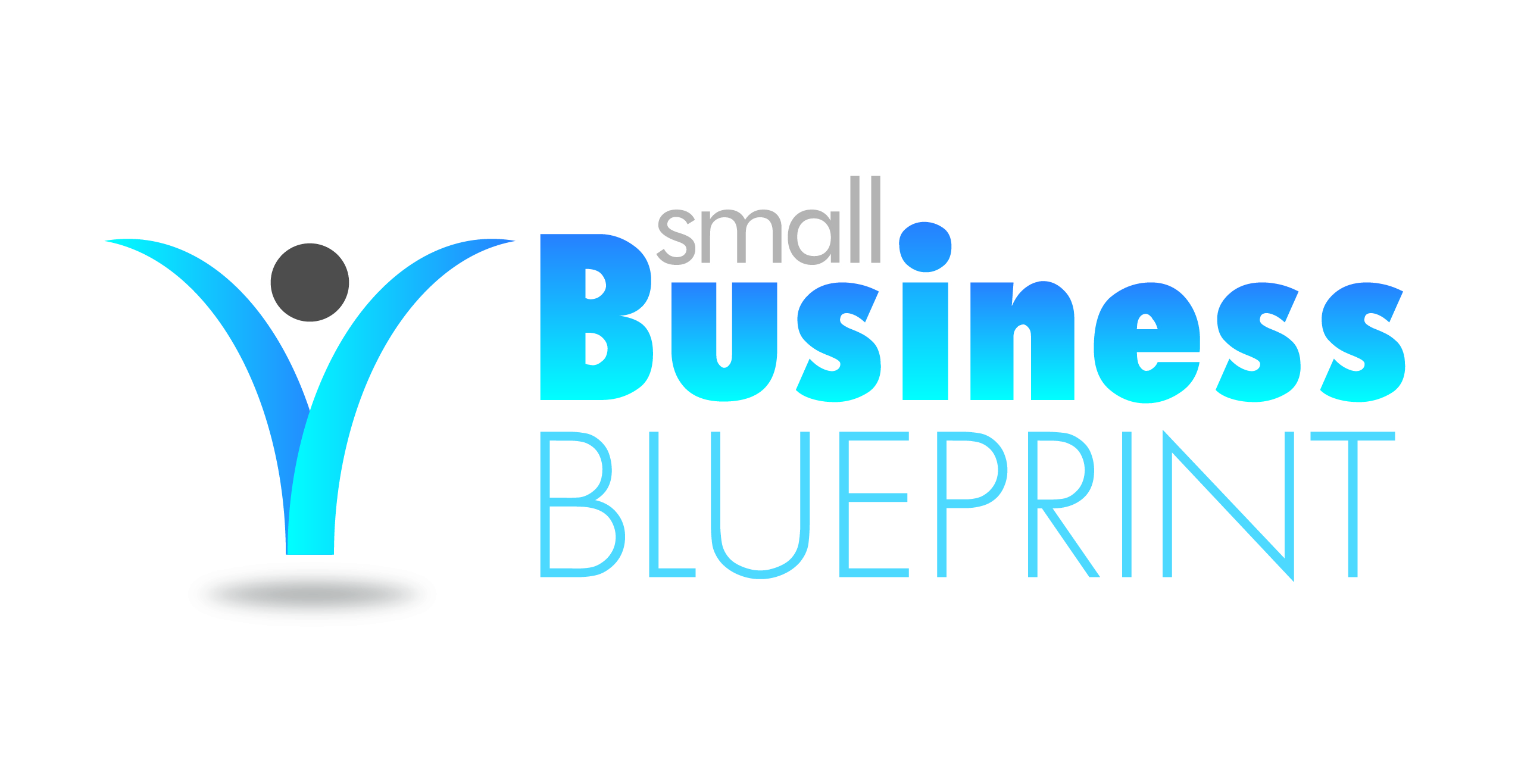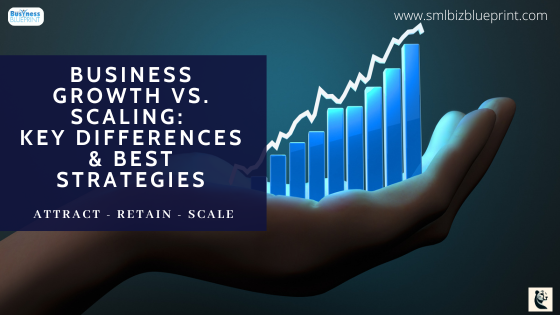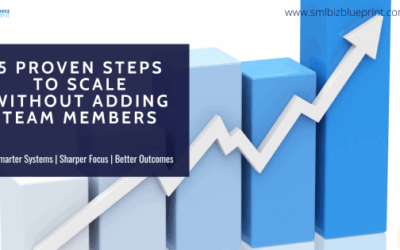Growing a small business is challenging enough, but knowing whether to grow or scale can be the difference between long-term success and financial struggle.
Many entrepreneurs mistakenly assume that growth and scaling are the same thing—but they’re not.
Here’s the real challenge:
- You’re increasing revenue, but your expenses seem to be rising just as fast.
- Hiring more employees or expanding operations feels like the only way forward—but it’s costly.
- You see competitors scaling rapidly while your business seems stuck in an endless cycle of reinvesting profits just to keep up.
If any of this sounds familiar, you’re not alone. 70% of small businesses fail because they scale too fast without financial stability (CB Insights).
Others struggle because they focus on growth at the expense of efficiency, leading to cash flow issues and operational bottlenecks.
But here’s the good news: You don’t have to fall into this trap.
In this guide, we’ll break down the key differences between business growth and scaling so you can determine the right approach for your business.
You’ll learn:
- How to know if your business is ready to scale
- The financial impact of growth vs. scaling
- Common mistakes businesses make when expanding too fast
- Best strategies to scale successfully while keeping costs low
By the end of this article, you’ll have a clear growth and scaling roadmap that helps you maximise revenue without unnecessary expenses—allowing you to build a profitable, scalable business model.
Let’s dive in.

#1 Understanding the Difference Between Business Growth and Scaling
When small business owners talk about expansion, they interchangeably use the terms growth and scaling.
However, these two concepts follow fundamentally different trajectories—and choosing the wrong approach at the wrong time can lead to financial strain, inefficiency, and even business failure.
Let’s break it down.
What is Business Growth?
Business growth refers to increased revenue, market share, and resources. However, it typically comes with proportional increases in costs—such as hiring more employees, investing in new locations, or expanding inventory.
Key Indicators of Business Growth:
Increased revenue and sales volume
A growing customer base
Expansion into new markets
Higher operational costs (staff, inventory, rent, etc.)
Example of Growth:
Imagine a local bakery with a booming customer base. To meet demand, they open a second location. Revenue increases, but so do costs—rent, staff wages, and equipment purchases. This is business growth, but it’s not necessarily scalable.
What is Scaling?
Scaling refers to expanding revenue exponentially without a significant increase in costs. Instead of simply adding more resources, a business finds ways to leverage technology, automation, and efficiency improvements to increase output while keeping expenses stable.
Key Differences from Growth:
Growth requires more resources → Scaling optimizes existing resources
Growth increases both revenue & costs → Scaling increases revenue with minimal cost growth
Growth is linear → Scaling is exponential
Example of Scaling:
A SaaS company (software as a service) develops an AI-powered customer support chatbot that allows them to handle 10x more customer inquiries without hiring additional staff.
Revenue increases, but costs stay the same, making this scaling instead of growth.
Can a Business Scale Without Growing (or Vice Versa)?
Growth Without Scaling:
A company can grow its revenue, but profitability remains unchanged if expenses rise at the same rate. Many traditional businesses, such as restaurants, construction firms, and retail stores, often experience growth without significant scalability.
Scaling Without Growth:
A business might implement automation and efficiency improvements but fail to attract enough customers to sustain long-term profitability. For example, a company with fully automated order fulfilment may struggle without a strong customer acquisition strategy.
The Key Takeaway:
The most successful businesses balance growth and scaling, ensuring they increase revenue while controlling expenses.
Tips
- Assess Your Business Model:
You’re in a growth model if your revenue depends on hiring more employees or increasing inventory. You have a scalable model if you can increase output without increasing costs. - Identify Bottlenecks:
Ask: If we double our customer base today, can we handle it without doubling our costs?
If not, optimise operations before attempting to scale. - Leverage Automation:
Invest in AI, automation tools, and digital marketing to increase efficiency.
Examples: Chatbots for customer service, CRM tools for lead management, and workflow automation.
#2 Why Small Businesses Need to Know the Difference Between Growth and Scaling
Many small business owners assume that growth equals success—but this is only half the equation.
A business can grow in revenue, workforce, and locations yet still struggle with thin profit margins, high expenses, and operational inefficiencies.
Understanding the difference between business growth and scaling is crucial because it determines:
- How efficiently your business generates profits
- Whether you’ll hit financial bottlenecks when expanding
- How well you can sustain long-term success
Let’s explore why small businesses must strategically balance growth and scaling—and how choosing the wrong approach can lead to costly mistakes.
The Financial Impact of Growth vs. Scaling
Growth Requires More Capital Investment
When a business grows, costs typically increase at the same rate as revenue.
More employees, larger office space, and higher inventory mean increased operational expenses.
Many businesses struggle with cash flow because they grow too fast without ensuring profitability.
Scaling Generates More Revenue Without Proportionally Increasing Costs
A scalable business model leverages automation, outsourcing, and digital tools to expand without significant financial investment.
Instead of hiring 10 new employees to handle 10x more customers, a scalable model might use automation to handle that increase at minimal additional cost.
Scaling prioritises profitability over just increasing size.
Key Difference: While growth can be expensive and risky, scaling allows businesses to expand without draining resources or reducing profitability.
Resource Allocation: Which Model Works for Your Business?
Before deciding whether to grow or scale, business owners must evaluate their resource availability, industry type, and business model.
Growth Is Ideal For Businesses That Need Physical Expansion:
Retail stores adding new locations
Restaurants & cafes expanding their seating capacity
Construction companies hire more workers to take on larger projects
Scaling Works Best for Digital & Service-Based Businesses:
SaaS companies that can serve more users without increasing infrastructure costs
Online education platforms that can accommodate thousands of students with automated courses
Consulting firms that can use AI-driven automation instead of hiring more staff
Key Takeaway: If your costs increase at the same rate as your revenue, you’re in a growth model. Your business is scalable if you can increase revenue without significant extra costs.
Common Mistakes Small Businesses Make When Trying to Scale
Expanding Too Quickly Without Financial Stability
Businesses that hire too many employees or open multiple locations before ensuring steady revenue streams often face cash flow problems.
Ignoring Process Efficiency Before Scaling
Many small businesses fail to optimise internal operations before scaling, leading to bottlenecks and inefficiencies.
Relying Solely on Hiring Instead of Leveraging Automation
Hiring more employees can work for growth, but it’s not a scalable strategy.
Key Takeaway: Scaling should not just mean getting bigger—it means getting more efficient.
Tips
- Audit Your Business Model Before Expanding
Review financial statements to determine if your revenue model supports scaling.
Ask: If my customer base doubled overnight, could I handle the demand without doubling expenses? - Focus on Profitability, Not Just Revenue Growth
Businesses that scale effectively prioritise increasing profit margins, not just revenue.
Use automation, outsourcing, and efficiency tools to reduce unnecessary costs while increasing output. - Implement Scalable Systems Early
Invest in CRM software, AI-powered customer support, and automated workflow tools before you start scaling. - Example: Companies that integrate cloud-based tools early on scale 3x faster than those relying on manual processes (Forrester Research).
Want more insights like this?
Join our newsletter for exclusive tips, strategies, and updates straight to your inbox!”
Sign Up Now
#3 How to Know If Your Business is Ready to Scale
Scaling a business sounds exciting, but scaling too soon—or without the right foundation—can lead to operational chaos and financial disaster.
Many business owners assume that they should immediately scale if they’re seeing consistent growth.
However, without the right infrastructure, automation, and financial stability, scaling can overwhelm resources, strain cash flow, and damage customer experience.
Before making the leap, here’s how to determine if your business is ready to scale and what steps to take to ensure success.
Key Signs Your Business is Ready for Growth
Growth is often the first step before scaling. If your business doesn’t have a steady revenue stream and efficient processes, attempting to scale could amplify inefficiencies and increase costs.
Here are some clear indicators that your business is ready for growth (but not necessarily scaling yet):
Consistent Demand & Sales Growth
Your customer base is growing steadily, and demand for your product or service remains strong.
You have repeat customers, showing that your offering has long-term value.
Positive Cash Flow & Profit Margins
You have enough cash reserves to support business expansion.
Your profit margins are stable or increasing rather than fluctuating wildly.
Established Team & Processes
You have a reliable team that can handle an increase in workload.
Your operations are structured, not chaotic.
Key Takeaway: If your revenue is increasing but so are your expenses at the same rate, you’re in a growth phase, not a scaling phase yet.
When to Transition from Growth to Scaling
Scaling is about expanding exponentially without proportionally increasing costs.
Businesses that scale successfully have optimised operations, strong financial foundations, and scalable systems.
Here’s how to tell if you’re ready to scale:
Step 1: Your Operations Are Running Smoothly and Efficiently
Your business can handle increased demand without significant bottlenecks.
You have automated processes to replace manual work.
Step 2: Demand Outpaces Your Current Capacity
You have more customer demand than you can fulfil without significant adjustments.
Your business is turning down opportunities because of capacity constraints.
Step 3: You Can Increase Revenue Without a Proportional Increase in Costs
Instead of hiring more staff to handle demand, you can use technology, automation, or outsourcing to manage increased volume efficiently.
Key Takeaway: If revenue is increasing but expenses remain stable, you’re ready to scale.
The Role of AI, Automation, and Digital Tools in Scaling
Scaling requires efficiency, automation, and optimised processes. If your business relies too much on manual labour, you may grow but won’t scale.
How AI & Automation Help Scaling:
Reduces costs: Automates repetitive tasks, reducing payroll expenses.
Increases output: Allows you to handle more customers without hiring more staff.
Improves customer experience: AI-powered chatbots, CRM tools, and workflow automation streamline customer interactions.
Examples of Automation for Scaling:
eCommerce & Retail:
AI-powered chatbots handle customer support 24/7, reducing the need for live agents.
Automated inventory management systems prevent stock issues.
Service-Based Businesses:
Scheduling software automates appointment bookings, reducing administrative work.
AI-powered proposal generators create estimates for new clients instantly.
SaaS & Digital Products:
Subscription-based software companies use automated onboarding sequences to handle thousands of new customers without hiring extra staff.
Key Takeaway: AI and automation allow businesses to scale without adding significant expenses, making them essential for long-term success.
Tips
- Conduct a Scalability Audit
Evaluate where bottlenecks exist in your operations.
Identify tasks that can be automated or streamlined. - Strengthen Financial Stability
Ensure you have positive cash flow and sustainable profit margins before scaling.
Use data-driven financial forecasting to predict growth scenarios. - Implement Scalable Systems Before Expanding
Invest in CRM software, AI-powered automation, and cloud-based solutions.
Set up standardised workflows to ensure consistency as you scale.
#4 Strategies for Sustainable Business Growth
Growing a business is exciting, but growth without structure can lead to cash flow issues, inefficiencies, and even business failure.
To ensure your business expands in a sustainable and profitable way, you need a strategic approach that balances increased revenue with operational efficiency.
This section will explore proven strategies to achieve sustainable growth without overwhelming your business operations or stretching your resources too thin.
Effective Marketing Strategies to Drive Growth
Without a strong marketing foundation, business growth can stall.
A well-planned marketing strategy ensures consistent lead generation, customer engagement, and revenue growth.
Content Marketing & SEO
Create high-quality, evergreen content that educates and attracts your target audience.
Optimise for SEO best practices (keyword research, on-page SEO, backlinks).
Paid Advertising & Retargeting
Use Google Ads, Facebook Ads, and LinkedIn Ads to target the right audience.
Implement retargeting strategies to bring back website visitors who didn’t convert the first time.
Customer Referral & Loyalty Programs
Encourage existing customers to refer new clients through incentives.
Implement a loyalty program to increase repeat purchases.
Key Takeaway: A mix of SEO, paid advertising, and referral marketing creates consistent revenue streams, which is essential for long-term business growth.
Building a Strong Foundation: Hiring, Operations, and Processes
Growth becomes unsustainable if operations aren’t streamlined.
Before scaling, businesses must strengthen their internal processes and team structures.
Hire Strategically, Not Reactively
Instead of hiring too quickly, focus on developing current employees and automating tasks.
Hire only when there’s a clear return on investment.
Standardise & Document Processes
Develop SOPs (Standard Operating Procedures) for key business functions to ensure consistency as you grow.
Use tools like Trello, Asana, or Notion to document workflows.
Leverage Technology to Improve Efficiency
Invest in automation tools for accounting, customer service, and marketing.
Use cloud-based software to improve team collaboration and productivity.
Example: Businesses that use workflow automation save an average of 20+ hours per week on repetitive tasks (Forrester).
Key Takeaway: Sustainable business growth is only possible if internal operations are optimised before expansion.
How to Increase Revenue Without Overextending Resources
Many businesses fall into the trap of chasing revenue at the expense of profitability.
However, increasing revenue without proportionally increasing costs is key to sustainable growth.
Focus on Customer Retention Instead of Only Acquisition
Acquiring a new customer costs 5x more than retaining an existing one (Harvard Business Review).
Improve customer service, offer exclusive deals, and build long-term relationships to increase repeat purchases.
Optimise Pricing & Upsell Smartly
Adjust pricing based on market demand and perceived value.
Offer upsells, cross-sells, and premium packages to existing customers.
Example: Apple’s upselling strategy (offering accessories and extended warranties) increases its average order value by 30%.
Diversify Revenue Streams
Introduce subscription models, digital products, or consulting services.
Expand into complementary product lines to increase customer spending.
Example: Amazon transitioned from eCommerce to AWS cloud services, turning it into one of its most profitable divisions.
Key Takeaway: Long-term revenue growth isn’t just about more customers—it’s about maximising the lifetime value of each customer.
Tips
- Track Key Business Metrics
Monitor customer acquisition costs, profit margins, and cash flow to ensure sustainable growth.
Use tools like Google Analytics, HubSpot, or QuickBooks to track financial health and marketing performance. - Develop Scalable Systems Before Expanding
Implement cloud-based and AI-driven solutions to handle increased workloads.
Ensure your supply chain and logistics can handle demand before expanding. - Test Growth Strategies Before Committing
Use A/B testing for marketing campaigns before allocating a larger budget.
Run pilot programs before investing in large-scale expansion. - Example: Airbnb started in a single city before scaling to a global audience, testing and refining its model along the way.

#5 Best Practices for Scaling a Small Business Successfully
Scaling a business isn’t just about growth—it’s about increasing revenue while keeping costs stable.
Many businesses fail when attempting to scale too quickly without the right systems. To scale successfully, you need a solid foundation, automation, and customer-centric strategies to expand your business without overloading your team or finances.
This section will explore proven strategies for scaling efficiently, ensuring your business can handle increased demand without losing control over operations.
Using Automation to Scale Efficiently
Scaling without automation means higher costs, more manual work, and slower processes.
Businesses implementing automation before scaling grow faster and maintain profitability as they expand.
Key Benefits of Automation in Scaling:
Reduces labour costs by handling repetitive tasks
Increases efficiency by streamlining workflows
Improves customer experience through AI-driven support
Essential Automation Tools for Scaling:
Marketing Automation:
Email marketing automation (Mailchimp, HubSpot) is used to nurture leads without manual effort.
Automate social media posting (Buffer, Hootsuite) to maintain a consistent presence.
Customer Service Automation:
Implement AI chatbots (Drift, Intercom) to handle FAQs and support inquiries 24/7.
Set up CRM automation (Salesforce, Zoho) to track and follow up with leads.
Operations & Workflow Automation:
Inventory management software (TradeGecko, NetSuite) should be used to prevent stock shortages.
Implement automated invoicing (QuickBooks, FreshBooks) to streamline payments.
Key Takeaway: Businesses that scale successfully automate before they expand, ensuring processes remain efficient as demand increases.
Customer Acquisition vs. Customer Retention in Scaling
Many businesses focus on acquiring new customers when scaling—but without a strong customer retention strategy, they spend more on marketing while losing existing customers.
Fact: Acquiring a new customer costs 5x more than retaining an existing one (Harvard Business Review).
How to Balance Customer Acquisition and Retention While Scaling:
Personalise the Customer Experience
Use AI-driven recommendation engines (like Amazon) to offer personalised product suggestions.
Leverage segmented email campaigns to engage customers based on their past purchases.
Implement a Scalable Customer Support System
Offer self-service knowledge bases to reduce support tickets.
Use AI chatbots to answer common questions while live agents handle complex issues.
Launch a Referral & Loyalty Program
Encourage word-of-mouth marketing by rewarding customers who refer others.
Offer exclusive perks for repeat buyers to increase customer lifetime value.
Key Takeaway: Businesses that scale without focusing on retention spend too much on acquisition while losing existing customers.
Avoiding Cash Flow Issues When Scaling
One of the most significant risks in scaling is running out of cash before reaching the next revenue milestone.
Even if sales increase, higher expenses can lead to financial instability.
How to Maintain Healthy Cash Flow While Scaling:
Forecast Expenses & Revenue Accurately
Use financial planning tools (Xero, QuickBooks) to predict future expenses.
Track burn rate to ensure scaling efforts remain sustainable.
Secure Funding in Advance
Explore venture capital, bank loans, or revenue-based financing before scaling.
Use subscription models or pre-orders to generate upfront revenue.
Reduce Unnecessary Costs
Outsource non-core functions (e.g., admin, bookkeeping) to avoid hiring too quickly.
Use automated workflows to replace repetitive manual tasks.
Key Takeaway: Businesses that scale without cash flow planning risk financial instability, delayed payments, and potential failure.
Tips
- Optimise Before Expanding
Ensure current operations run smoothly before attempting to scale.
Eliminate bottlenecks and inefficiencies before increasing customer volume. - Invest in Scalable Technology
Use cloud-based tools that grow with your business.
Automate time-consuming manual tasks to maintain efficiency.
Prioritise Customer Retention While Scaling
Keep existing customers engaged with personalised marketing and loyalty programs.
Scaling isn’t just about growth—it’s about sustainable profitability.
Lessons from Businesses That Scaled the Right Way
Example: Slack – Scaling Through Efficiency & Automation
Slack started as an internal communication tool for a gaming company but pivoted to a scalable SaaS product.
What Made It Scalable?
Automation & Self-Service: Users could sign up, onboard, and use the product without sales intervention.
Viral Growth Model: Free-tier users helped grow awareness, converting businesses into paying customers.
Low Operational Costs: As they gained millions of users, costs remained stable, allowing them to scale profitably.
Key Takeaway: SaaS and digital businesses scale best when they automate onboarding, customer acquisition, and service delivery—allowing them to handle thousands of users without additional expenses.
Tips
- Validate Demand Before Expanding or Scaling
Conduct market research to confirm customers actually want your product or service before making significant investments.
Example: Test a new product line with a limited launch before going nationwide. - Keep Growth Profitable
Ensure new investments (e.g., locations, hires, marketing) generate positive ROI.
Track customer acquisition costs (CAC) vs. lifetime value (LTV) to maintain profitability. - Use Automation to Scale Without Overloading Resources
Implement self-service options, AI chatbots, and automated marketing to handle growth efficiently.
Don’t miss a beat in your business growth journey!
Join Pulse and stay ahead with expert tips and actionable advice every month.
Subscribe to Pulse Today
Conclusion
Scaling and growth are different, and understanding the difference is critical for long-term business success.
Many businesses fail because they grow too fast without the proper foundation, while others miss out on scaling opportunities that could make them more profitable and efficient.
Here’s what we’ve covered:
- Growth vs. Scaling: Growth increases revenue but also increases costs while scaling boosts revenue without significantly increasing expenses.
- When to Grow vs. When to Scale: Businesses must establish demand and operational stability before scaling.
- Common Pitfalls: Growing too quickly can lead to cash flow problems, inefficiencies, and operational chaos.
- Best Strategies for Scaling: Automation, AI, streamlined operations, and customer retention strategies make scaling sustainable.
What’s Next for Your Business?
Now that you understand the key differences between growth and scaling, it’s time to assess where your business stands:
Are you in the growth phase? Focus on expanding revenue while optimising operations.
Are you ready to scale? Invest in automation, AI, and process efficiency to grow profitably.
Not sure which path is right for you? Start with a business audit to identify bottlenecks and opportunities.
Action Step:
Review your current business model – Are you increasing revenue at the cost of higher expenses?
Identify areas where automation and process improvements can help you scale.
Make data-driven decisions before expanding too quickly.
Ready to Build a Scalable Business Model?
FAQs
Q1: What is the main difference between business growth and scaling?
A1: Growth refers to increasing revenue by adding more resources (employees, locations, or inventory), while scaling means increasing revenue without significantly increasing costs. Scaling focuses on efficiency, automation, and process optimisation to grow profitably.
Q2: How do I know if my business is ready to scale?
A2: Your business is ready to scale if:
You have consistent revenue growth and demand that exceeds current capacity.
Your operations can handle increased demand without significantly higher costs.
You have automated processes and scalable systems in place.
Your cash flow is stable, and you’re not relying on short-term funding to expand.
Q3: Can a business scale without growing first?
A3: Not usually. Most businesses need to grow first (build demand, refine operations, and generate steady revenue) before scaling efficiently. Premature scaling without strong financials and infrastructure often leads to operational bottlenecks and cash flow problems.
Q4: What are common mistakes businesses make when trying to scale?
A4: Scaling too early before achieving product-market fit.
Not automating processes, leading to inefficiencies.
Overhiring instead of leveraging technology.
Ignoring customer retention, causing high churn rates.
Underestimating cash flow needs, leading to financial instability.
Q5: What are the best strategies for scaling a business successfully?
A5: Automate workflows to reduce manual labour.
Leverage AI-powered tools for customer service, marketing, and operations.
Focus on customer retention, as retaining customers is cheaper than acquiring new ones.
Monitor key business metrics to ensure financial sustainability.
Q6: How does automation help in scaling a business?
A6: Automation allows businesses to handle more customers, streamline operations, and reduce costs without increasing the workload. Examples include:
AI-powered chatbots for customer service
CRM automation for sales and marketing
Inventory and order management software for eCommerce
Automated invoicing and bookkeeping to improve cash flow
Q7: What industries benefit the most from scaling instead of traditional growth?
A7: SaaS and technology companies (low-cost user acquisition at scale)
E-commerce businesses (automated order fulfilment and digital marketing)
Online education platforms (scalable digital courses with one-time content creation)
Consulting and coaching services (productised digital offers instead of hourly billing)
Bonus Tip: No matter your industry, scaling works best when your business model is built for efficiency and automation.
Other Articles
Best AI Tools for Content Creation: 7 Must-Try Solutions to Boost Your Workflow Today
Custom GPT vs. General AI: Which Solution Fits Your Needs?
7 Reasons Why Small Businesses Stop Growing—and How to Overcome Them




